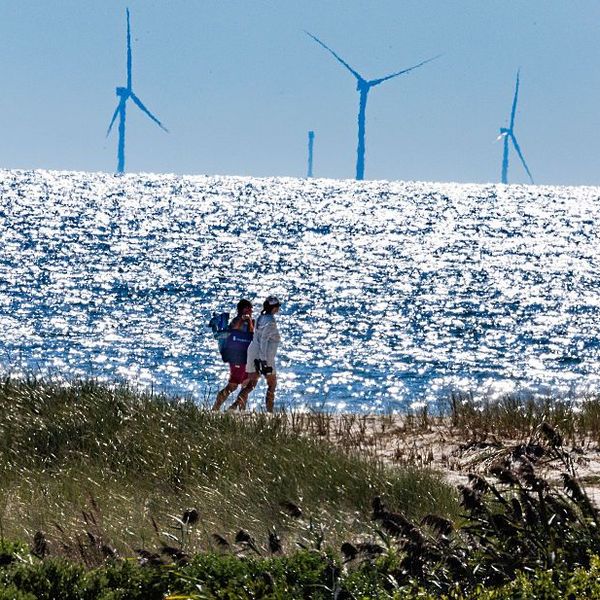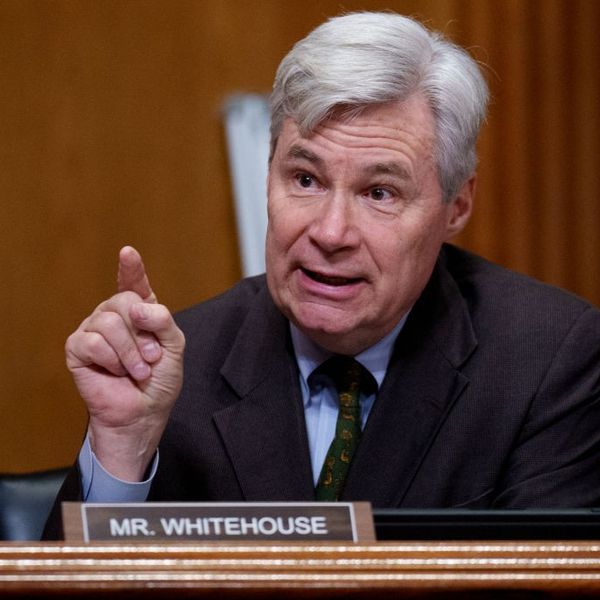Report: Renewables Could Power Nearly All US Energy Usage by 2050
Research counters 'myth' that country cannot rely on wind, solar and other renewable sources
If the US ceases to burn coal and ratchets down both nuclear and natural gas usage, the resulting reliance on wind, solar and other renewables "could meet or exceed demand in 99.4 percent of hours" by 2050, according to a recent report (pdf) by Synapse Energy Economics for the nonprofit think tank Civil Society Institute (CSI).
"Put simply, the message is this: It is a myth to say the United States cannot rely on renewables for the bulk of electricity generation,'' said report co-author Thomas Vitolo.
Undertaken to counter questions raised about the impact of large-scale wind and solar integration on electric system reliability, the research also found regional loads being met "without imports from other regions and without turning to reserve storage," and surplus power for export in 8.6 percent of all hours, "providing an ample safety net where needed from one region of the U.S. to the next."
The report assumes a "transition scenario" (based on a 2011 report also by Synapse) in which the US eliminates coal usage and reduces dependency on natural gas and nuclear power, moving instead toward a power system based on energy efficiency and renewable energy.
Based on these "projected mixes" of existing technology and operational practices, the grid is capable of balancing projected load "for each region, in nearly every hour of every season of the year" demonstrating--the report asserts-- that the "strategies to address one of the most pressing challenges faced by our species and our planet are already not only achievable, but cost effective.''
"This study shows that the U.S. electricity grid could integrate and balance many times the current level of renewables with no additional reliability issues," said Civil Society senior energy analyst, Grant Smith. "In contrast, the alternative--continuing to rely on increasing combustion of fossil fuels to generate electricity, and producing ever-increasing levels of greenhouse gases--is far less feasible, and presents much more daunting technical, economic, and social challenges to human and environmental welfare."
Though the research is US-specific, solar industry site Solar Server reports the findings are supported by data from European grid operators, where in 2011 renewables supplied 41% of Denmark's electricity.
_____________________
An Urgent Message From Our Co-Founder
Dear Common Dreams reader, The U.S. is on a fast track to authoritarianism like nothing I've ever seen. Meanwhile, corporate news outlets are utterly capitulating to Trump, twisting their coverage to avoid drawing his ire while lining up to stuff cash in his pockets. That's why I believe that Common Dreams is doing the best and most consequential reporting that we've ever done. Our small but mighty team is a progressive reporting powerhouse, covering the news every day that the corporate media never will. Our mission has always been simple: To inform. To inspire. And to ignite change for the common good. Now here's the key piece that I want all our readers to understand: None of this would be possible without your financial support. That's not just some fundraising cliche. It's the absolute and literal truth. We don't accept corporate advertising and never will. We don't have a paywall because we don't think people should be blocked from critical news based on their ability to pay. Everything we do is funded by the donations of readers like you. Will you donate now to help power the nonprofit, independent reporting of Common Dreams? Thank you for being a vital member of our community. Together, we can keep independent journalism alive when it’s needed most. - Craig Brown, Co-founder |
If the US ceases to burn coal and ratchets down both nuclear and natural gas usage, the resulting reliance on wind, solar and other renewables "could meet or exceed demand in 99.4 percent of hours" by 2050, according to a recent report (pdf) by Synapse Energy Economics for the nonprofit think tank Civil Society Institute (CSI).
"Put simply, the message is this: It is a myth to say the United States cannot rely on renewables for the bulk of electricity generation,'' said report co-author Thomas Vitolo.
Undertaken to counter questions raised about the impact of large-scale wind and solar integration on electric system reliability, the research also found regional loads being met "without imports from other regions and without turning to reserve storage," and surplus power for export in 8.6 percent of all hours, "providing an ample safety net where needed from one region of the U.S. to the next."
The report assumes a "transition scenario" (based on a 2011 report also by Synapse) in which the US eliminates coal usage and reduces dependency on natural gas and nuclear power, moving instead toward a power system based on energy efficiency and renewable energy.
Based on these "projected mixes" of existing technology and operational practices, the grid is capable of balancing projected load "for each region, in nearly every hour of every season of the year" demonstrating--the report asserts-- that the "strategies to address one of the most pressing challenges faced by our species and our planet are already not only achievable, but cost effective.''
"This study shows that the U.S. electricity grid could integrate and balance many times the current level of renewables with no additional reliability issues," said Civil Society senior energy analyst, Grant Smith. "In contrast, the alternative--continuing to rely on increasing combustion of fossil fuels to generate electricity, and producing ever-increasing levels of greenhouse gases--is far less feasible, and presents much more daunting technical, economic, and social challenges to human and environmental welfare."
Though the research is US-specific, solar industry site Solar Server reports the findings are supported by data from European grid operators, where in 2011 renewables supplied 41% of Denmark's electricity.
_____________________
If the US ceases to burn coal and ratchets down both nuclear and natural gas usage, the resulting reliance on wind, solar and other renewables "could meet or exceed demand in 99.4 percent of hours" by 2050, according to a recent report (pdf) by Synapse Energy Economics for the nonprofit think tank Civil Society Institute (CSI).
"Put simply, the message is this: It is a myth to say the United States cannot rely on renewables for the bulk of electricity generation,'' said report co-author Thomas Vitolo.
Undertaken to counter questions raised about the impact of large-scale wind and solar integration on electric system reliability, the research also found regional loads being met "without imports from other regions and without turning to reserve storage," and surplus power for export in 8.6 percent of all hours, "providing an ample safety net where needed from one region of the U.S. to the next."
The report assumes a "transition scenario" (based on a 2011 report also by Synapse) in which the US eliminates coal usage and reduces dependency on natural gas and nuclear power, moving instead toward a power system based on energy efficiency and renewable energy.
Based on these "projected mixes" of existing technology and operational practices, the grid is capable of balancing projected load "for each region, in nearly every hour of every season of the year" demonstrating--the report asserts-- that the "strategies to address one of the most pressing challenges faced by our species and our planet are already not only achievable, but cost effective.''
"This study shows that the U.S. electricity grid could integrate and balance many times the current level of renewables with no additional reliability issues," said Civil Society senior energy analyst, Grant Smith. "In contrast, the alternative--continuing to rely on increasing combustion of fossil fuels to generate electricity, and producing ever-increasing levels of greenhouse gases--is far less feasible, and presents much more daunting technical, economic, and social challenges to human and environmental welfare."
Though the research is US-specific, solar industry site Solar Server reports the findings are supported by data from European grid operators, where in 2011 renewables supplied 41% of Denmark's electricity.
_____________________

